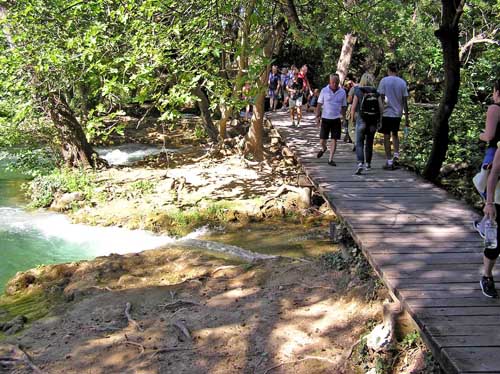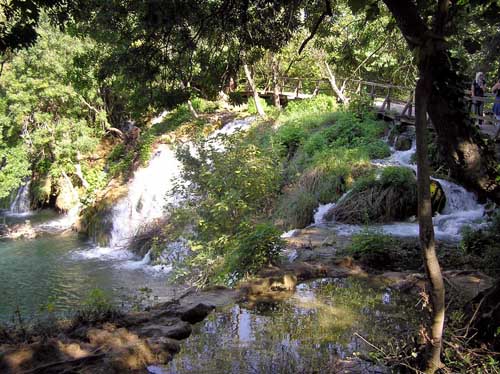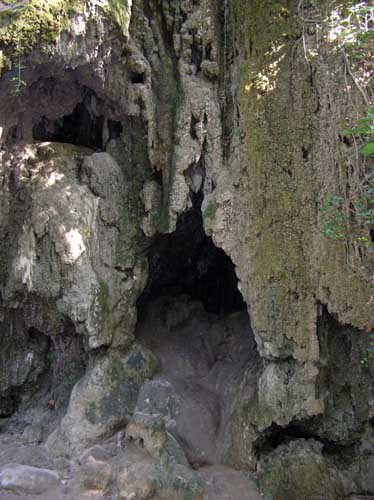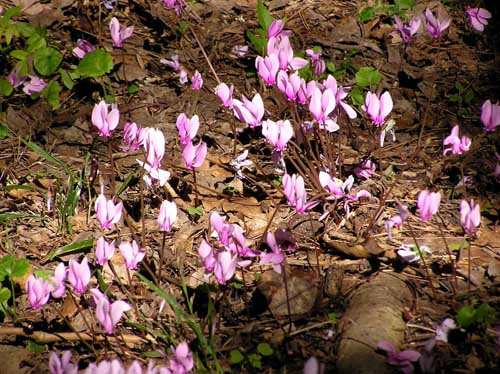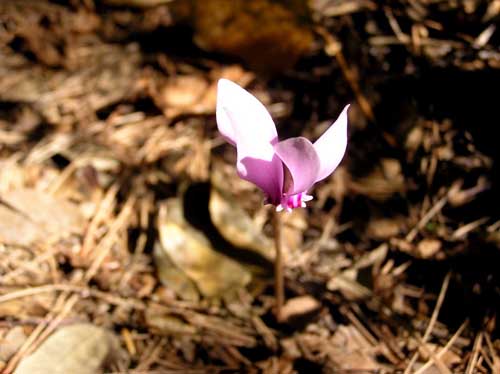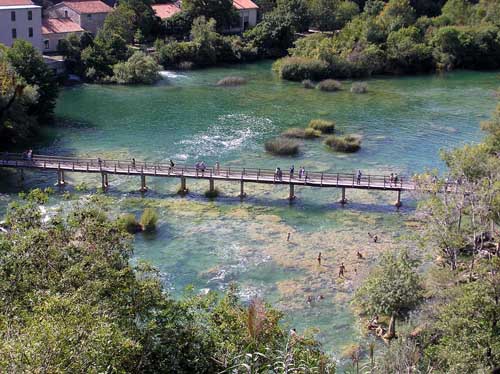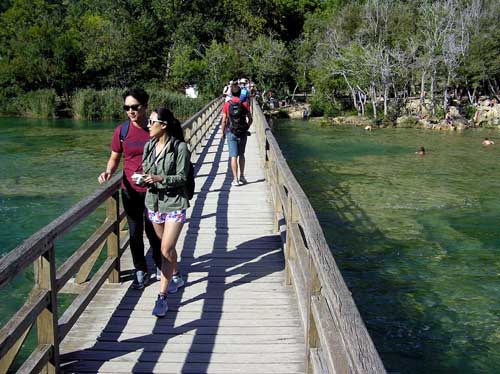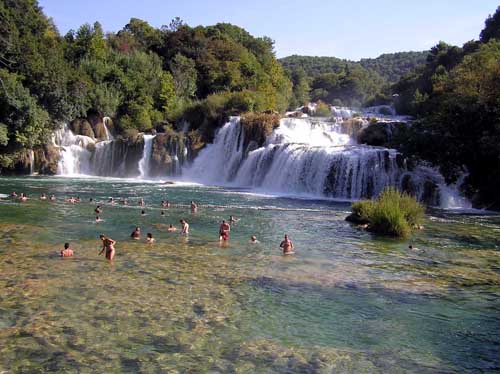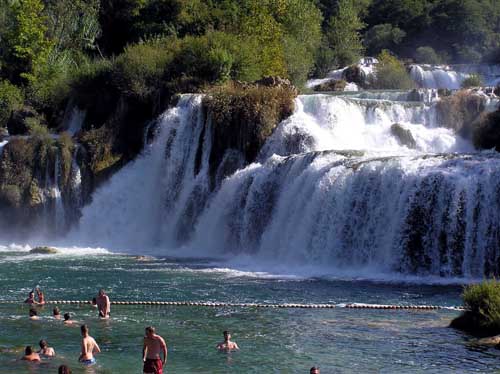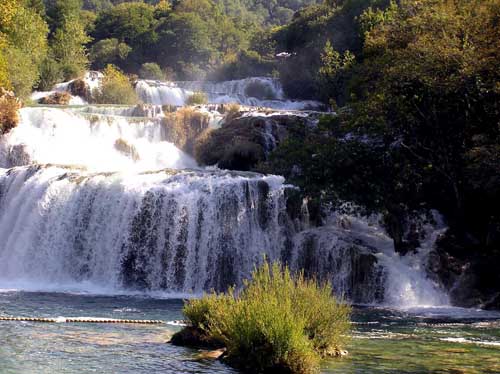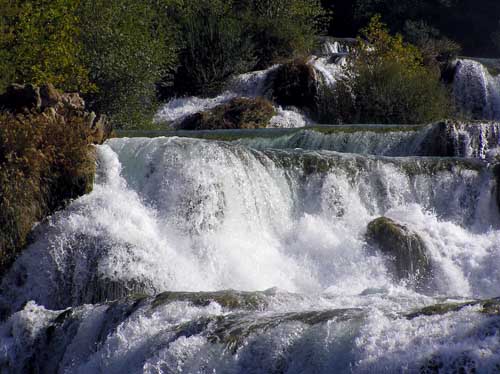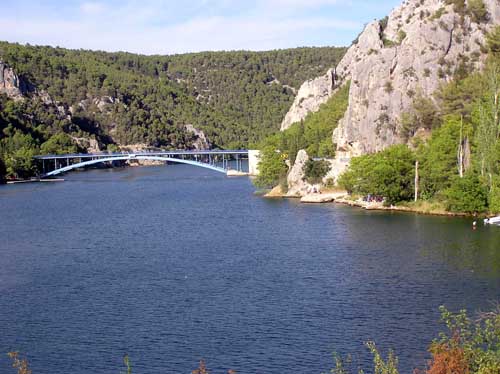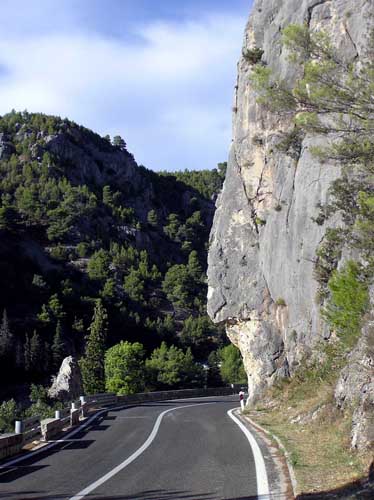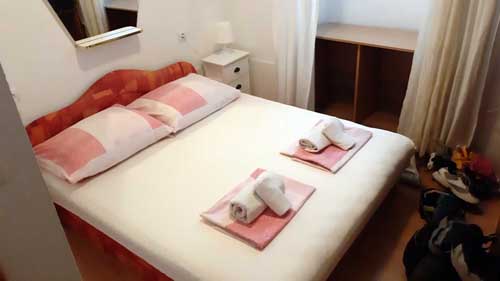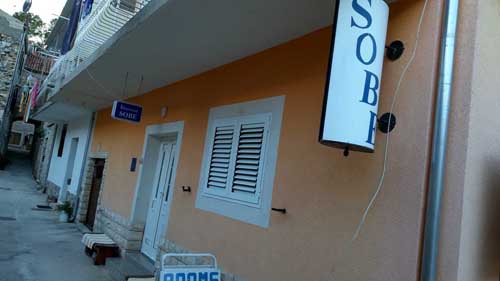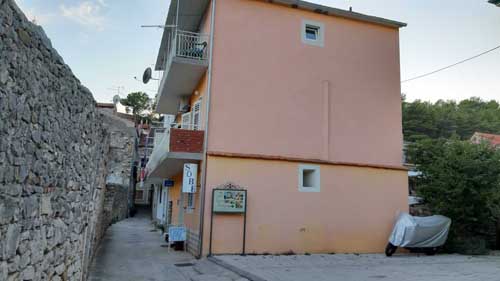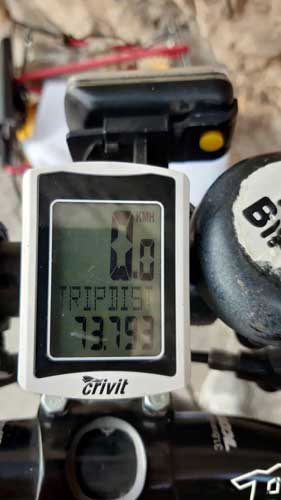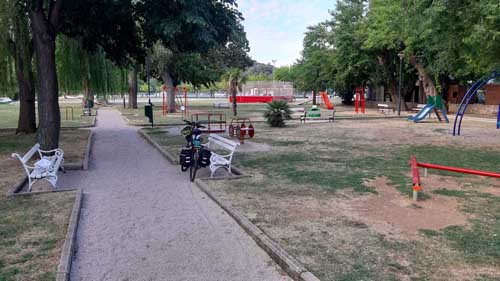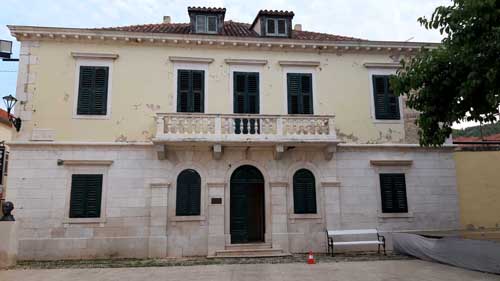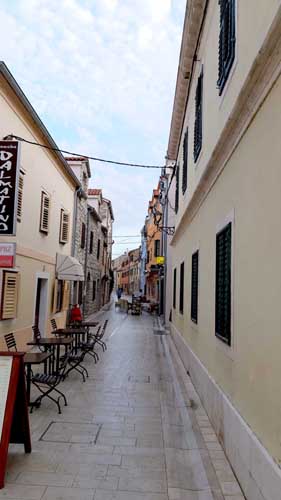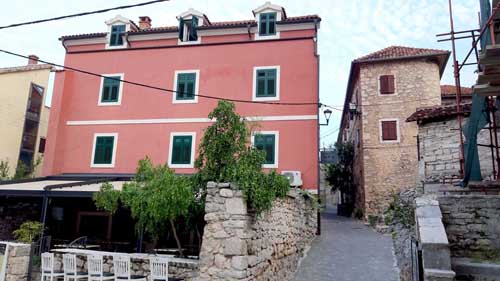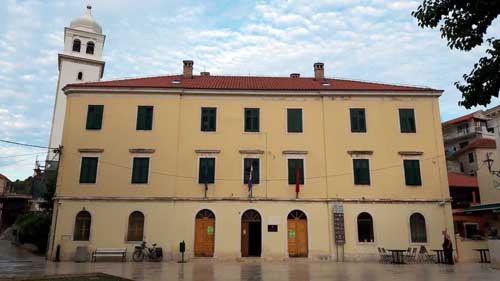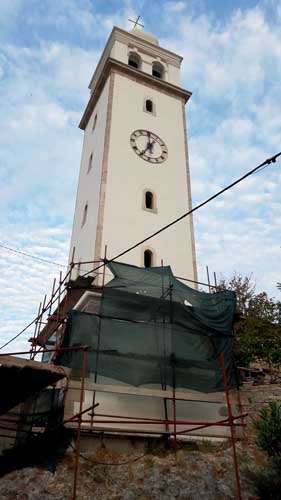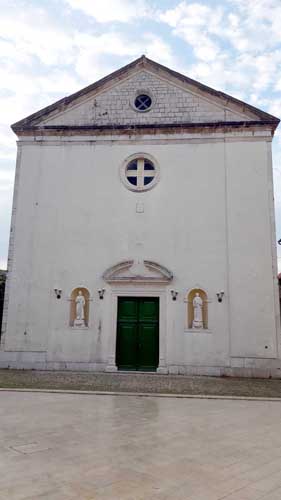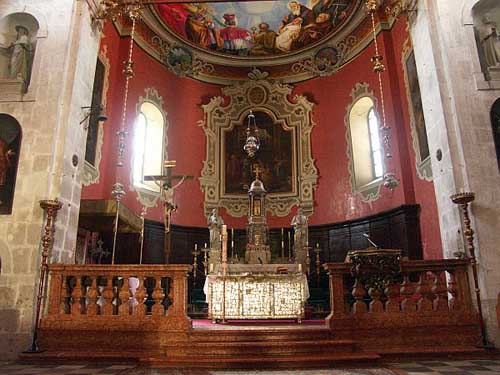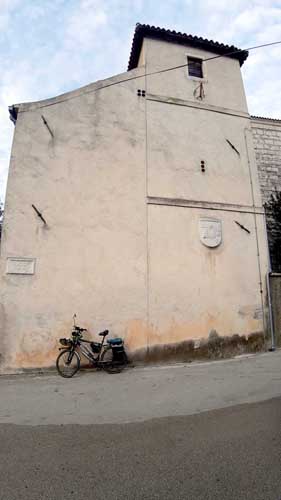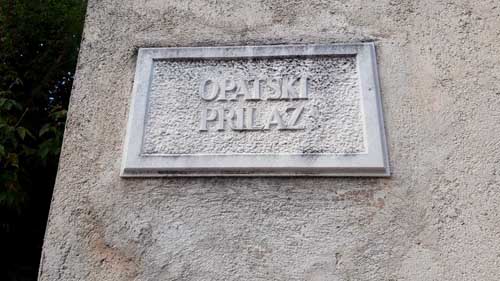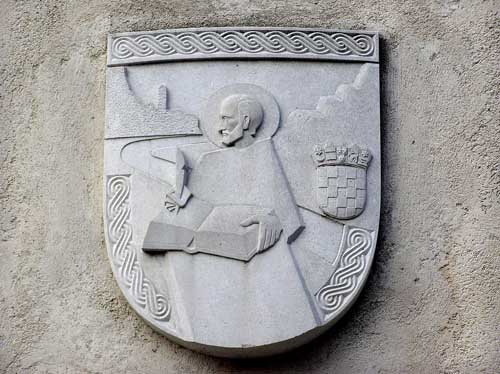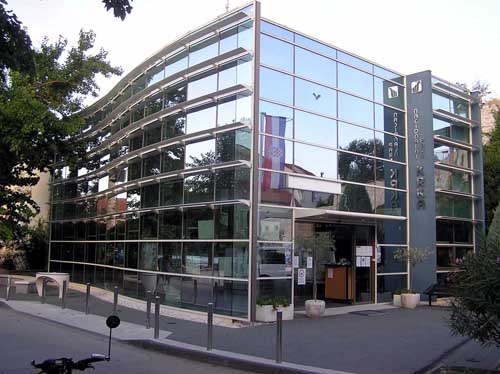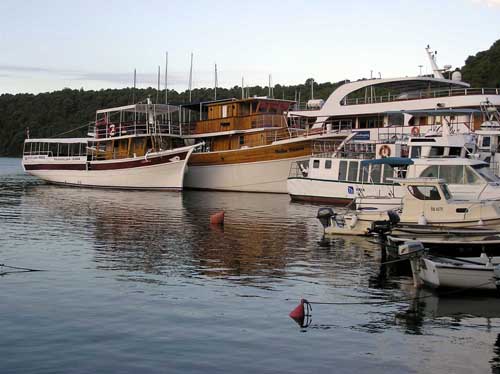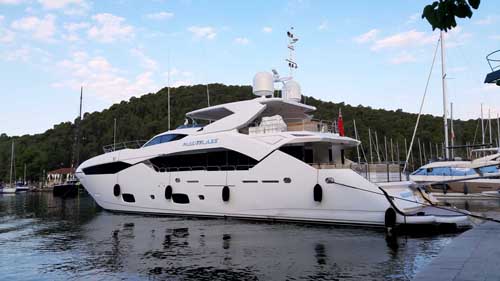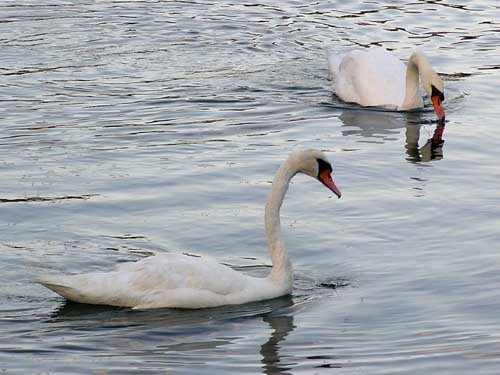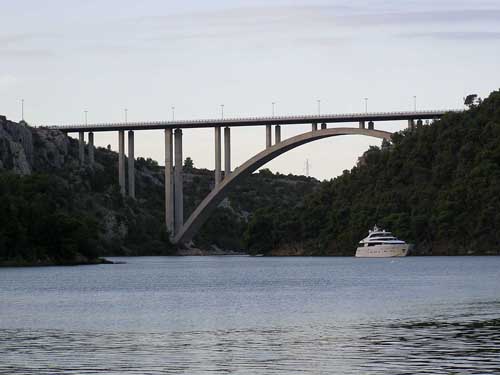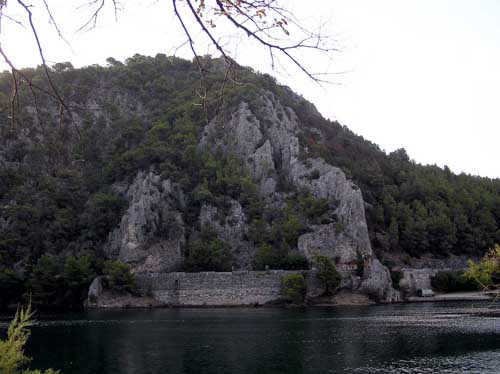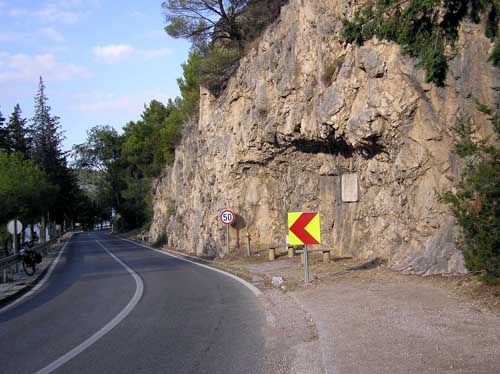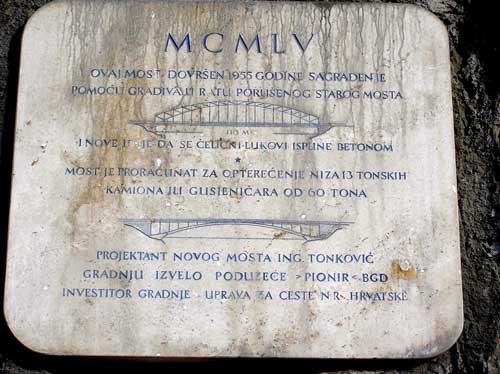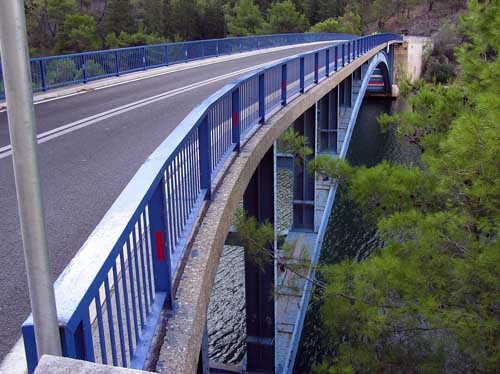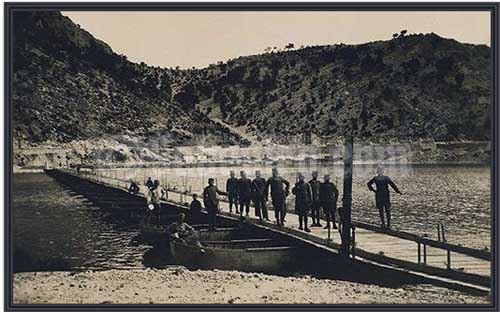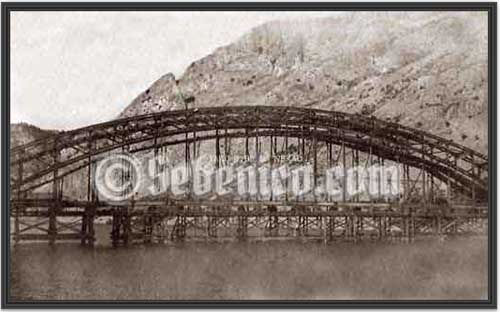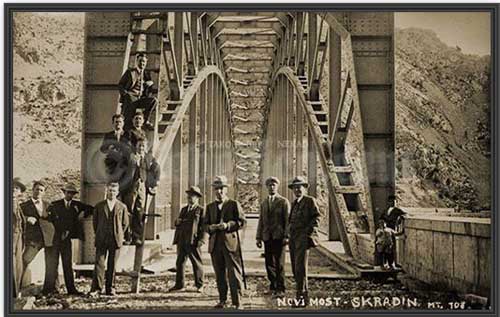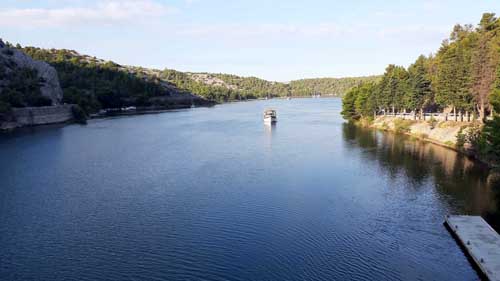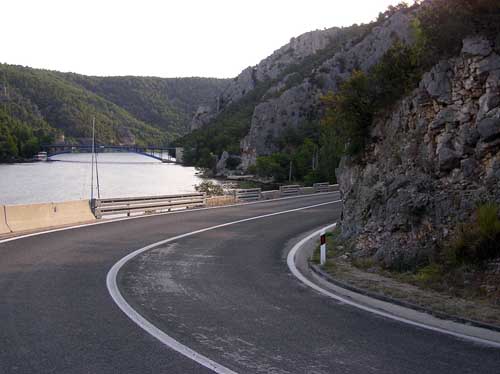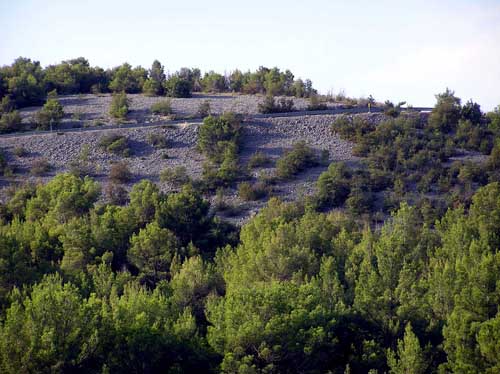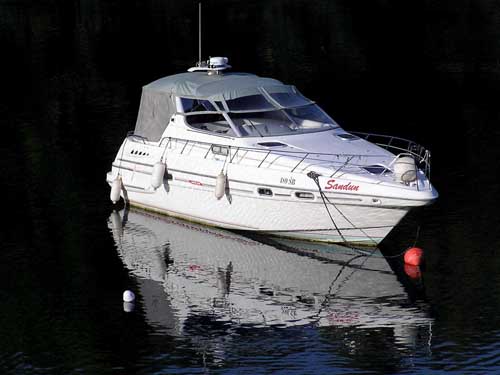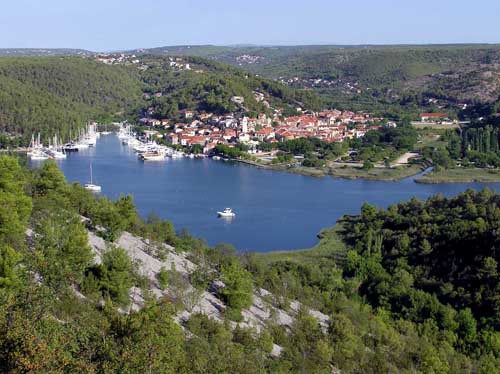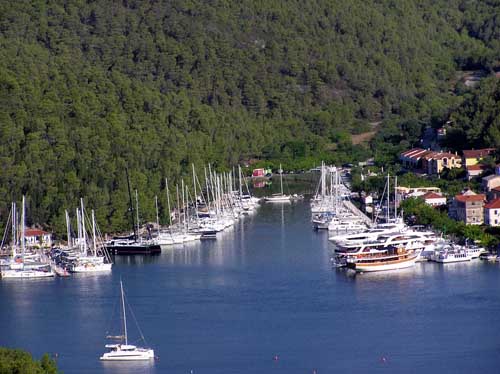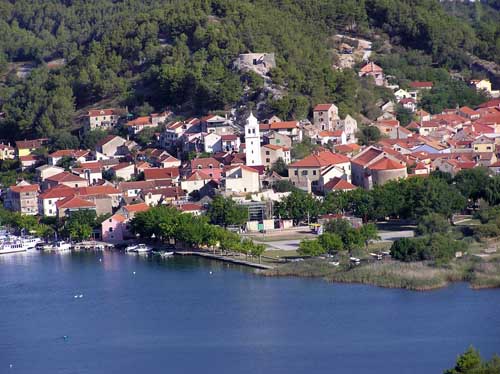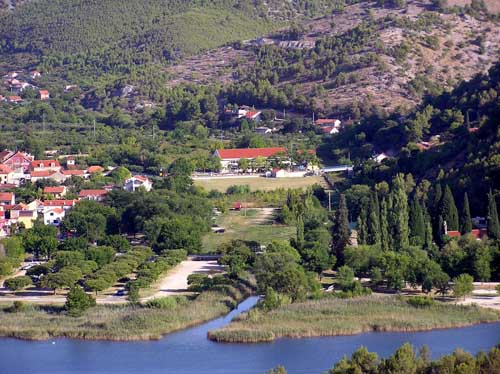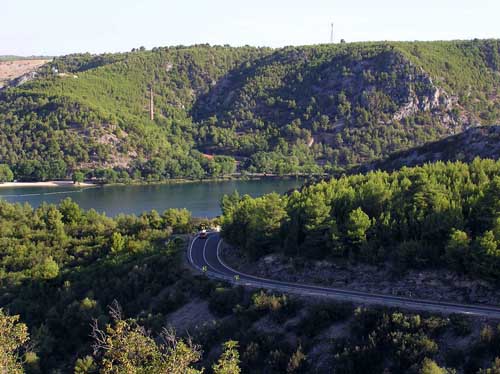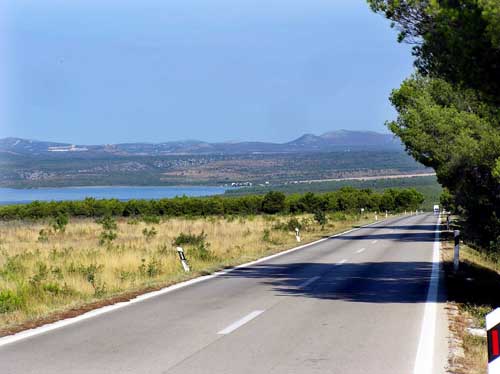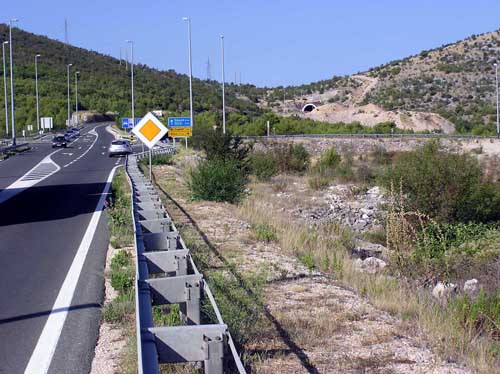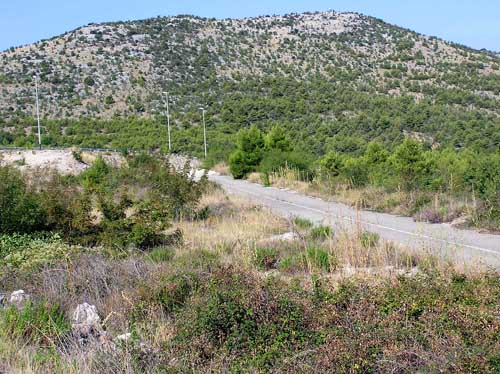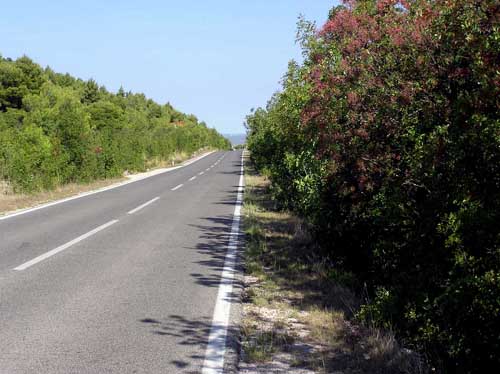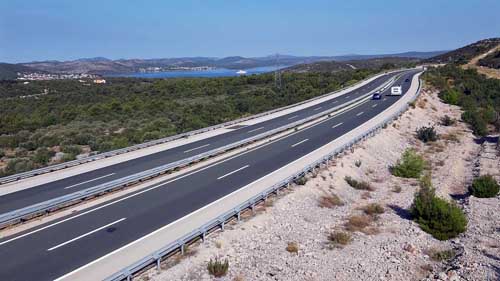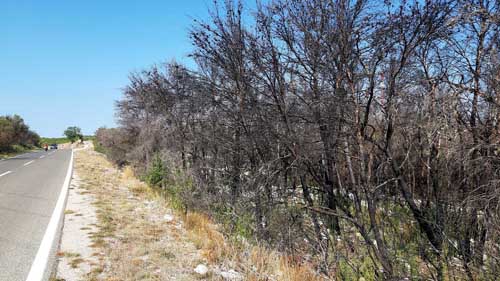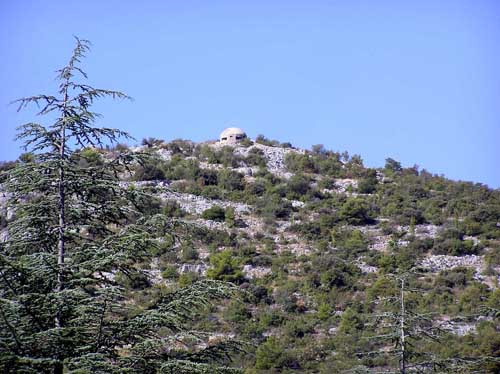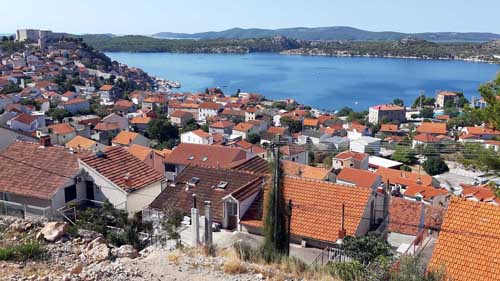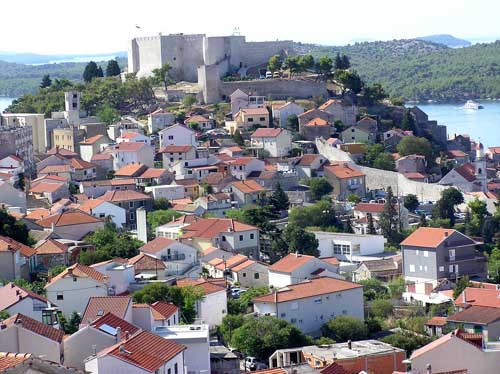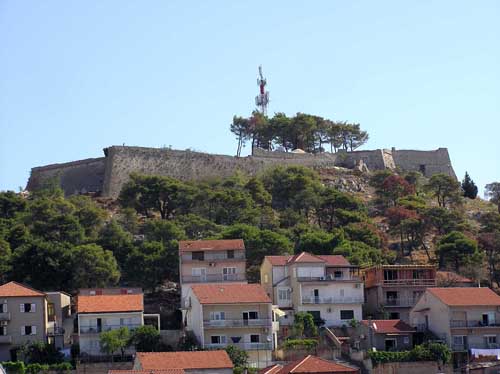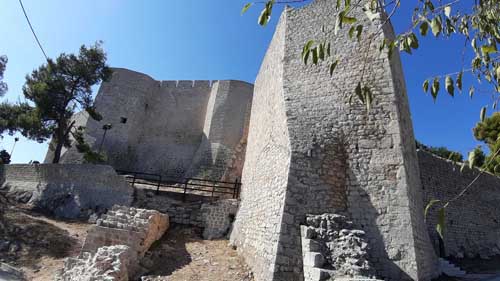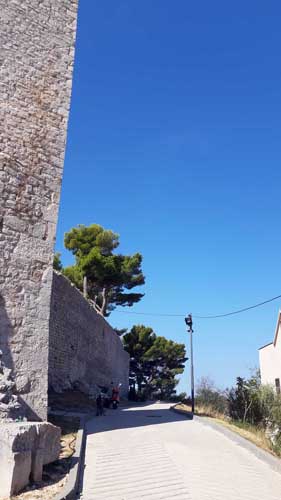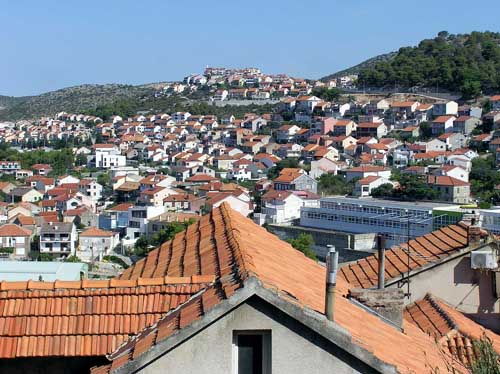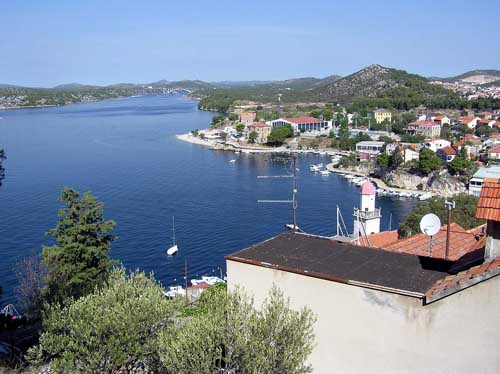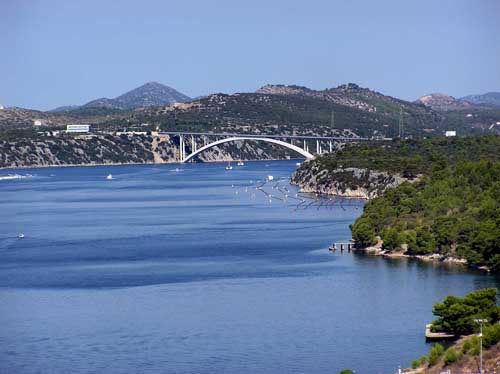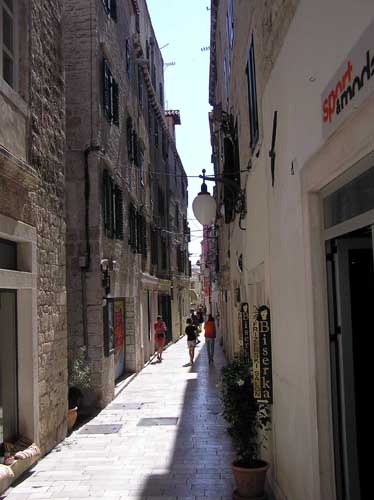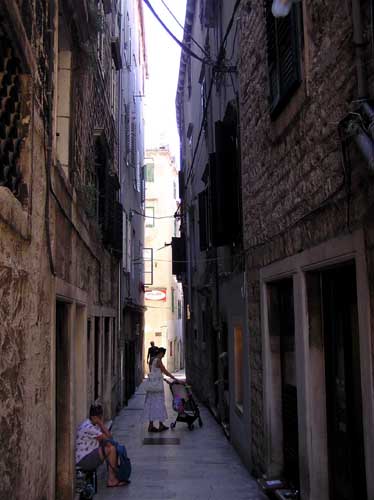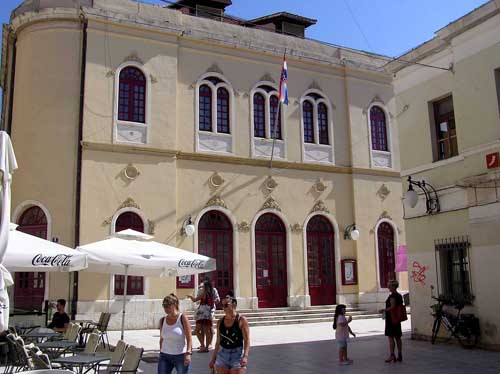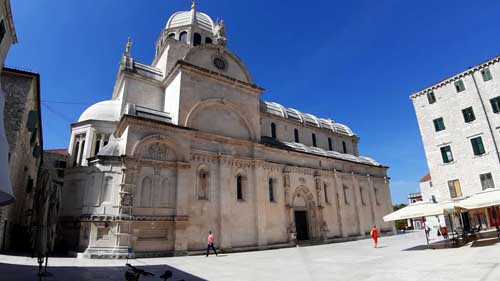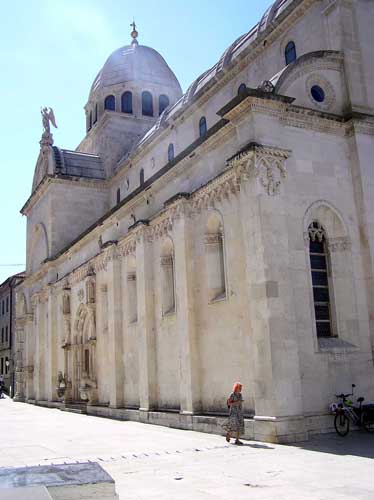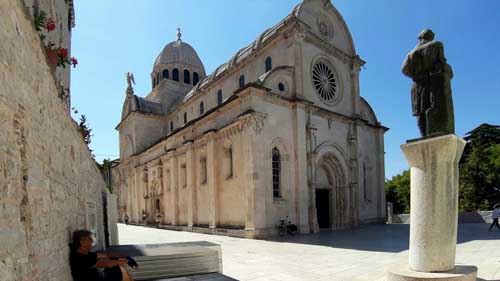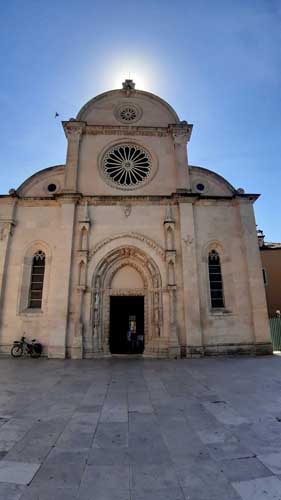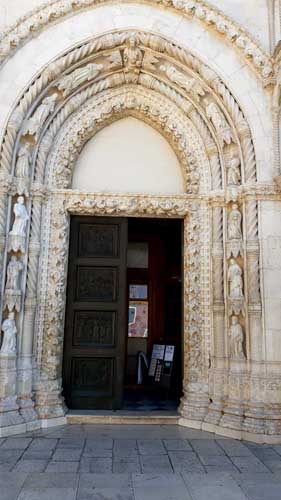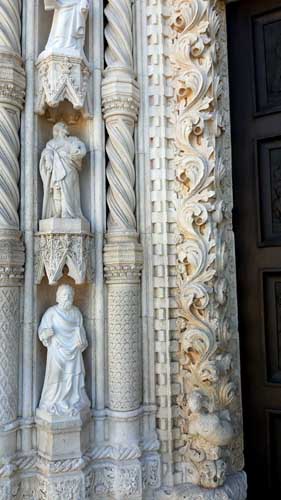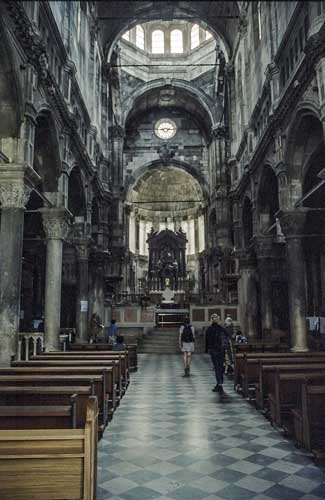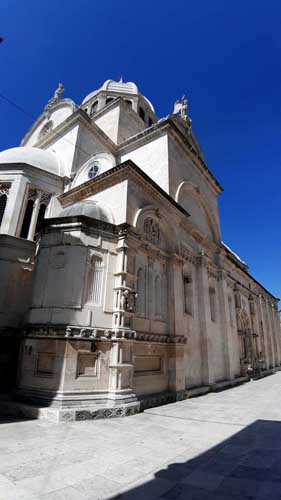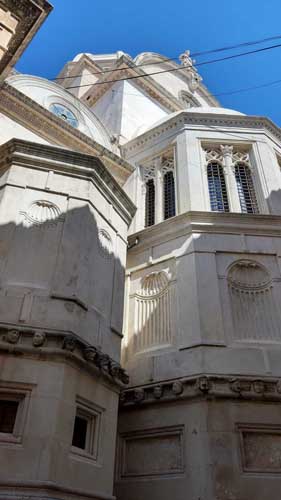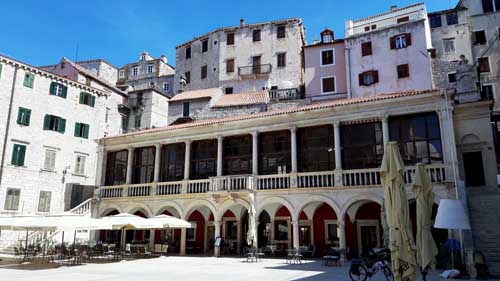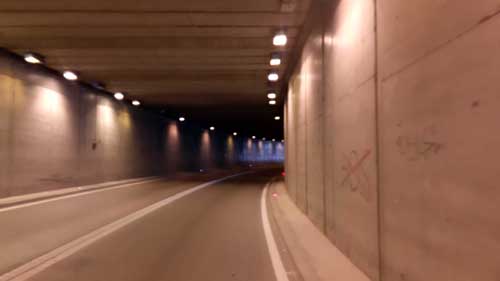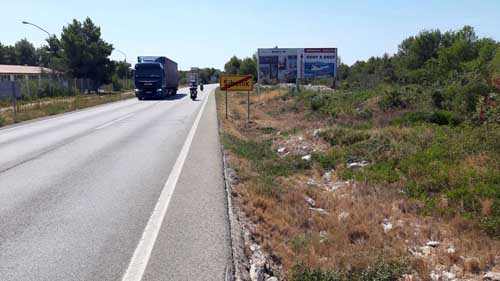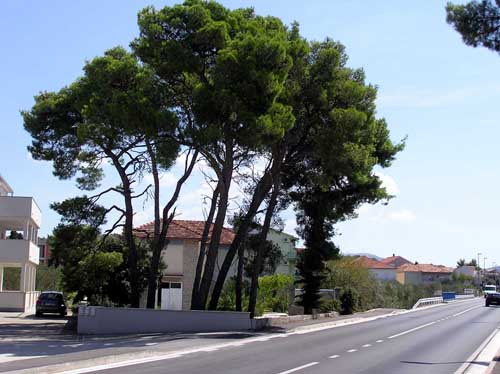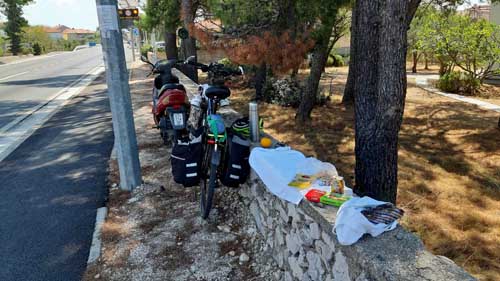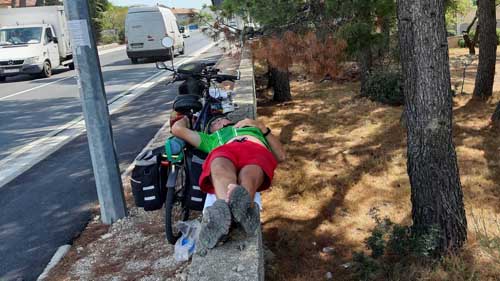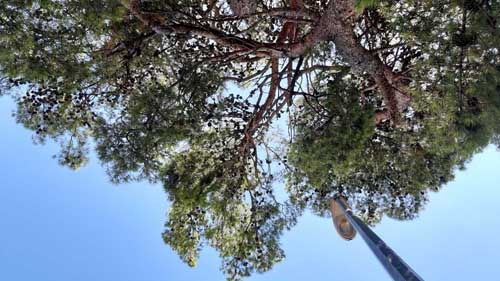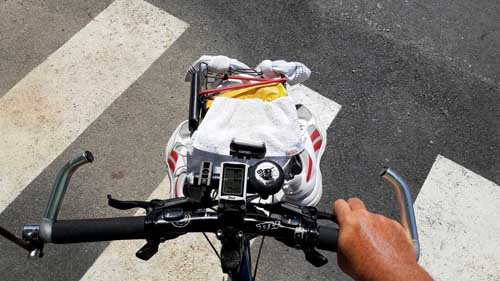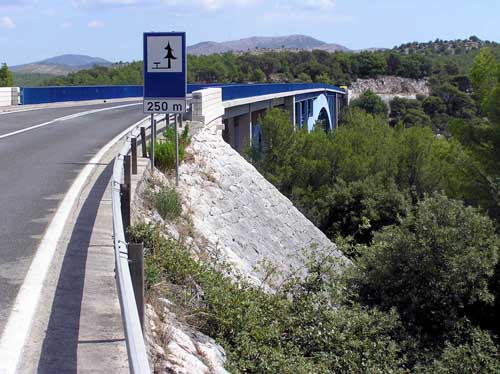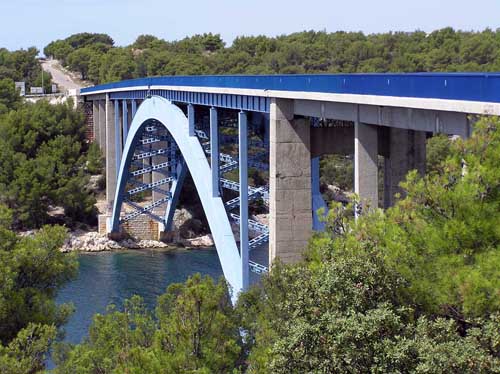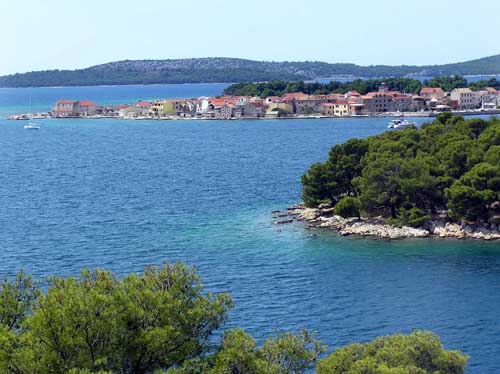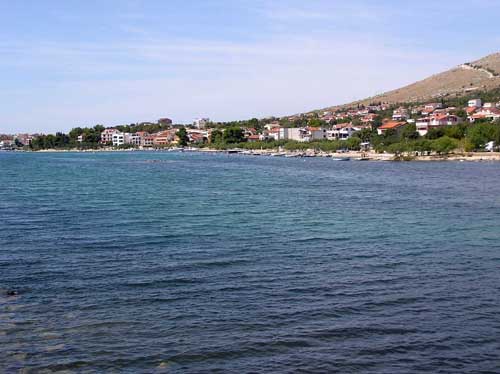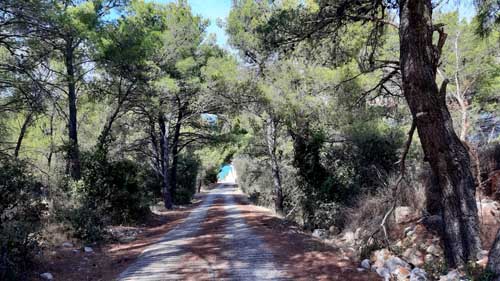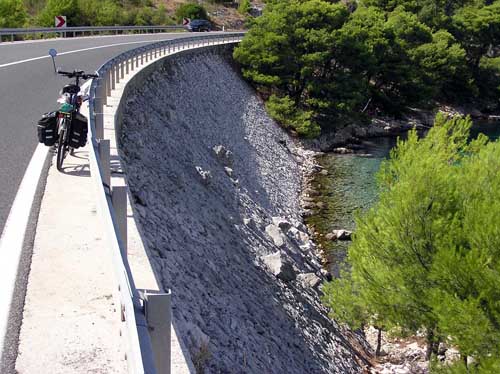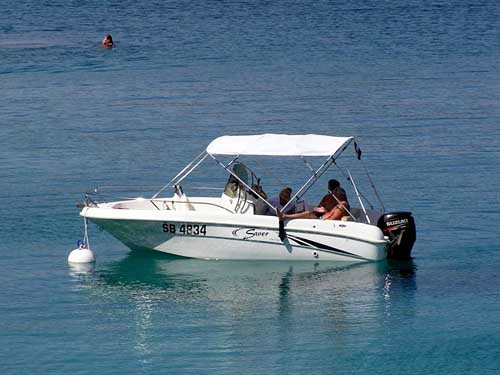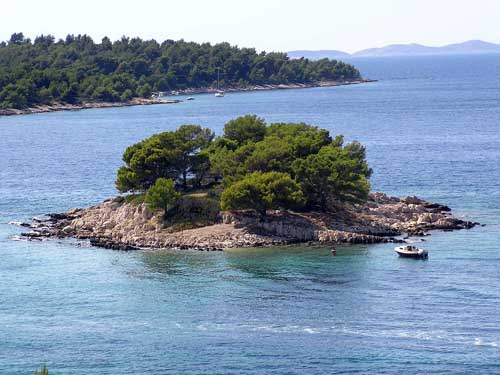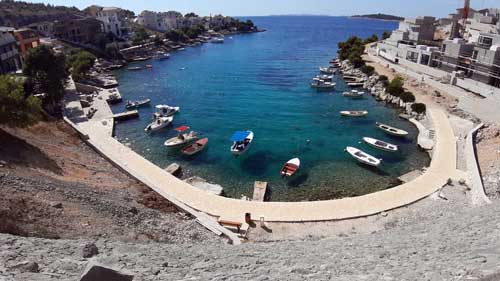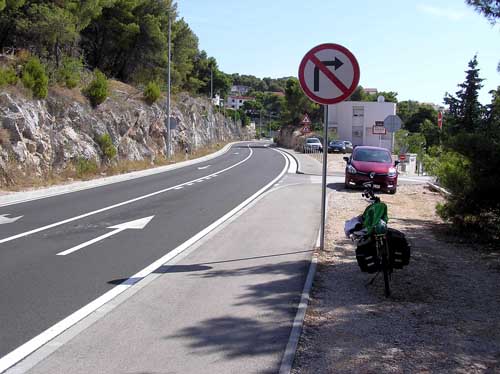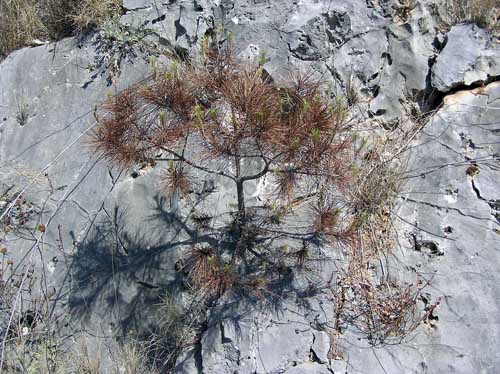Marketing
Knin - Split 2020 Part Two
You can come back on the previous part of this travelogue here.
However, this does not mean that you, my dear reader, will be deprived of images, of the already controversial waterfalls.
No way!
Four years ago, I was an accomplice in a group trip of the school where I work. There was almost a full bus of us, so on our way, we stopped by this place wherein about an hour and a half we visited the Krka waterfalls as it should be. It means by a trail that reminds me somewhat of the one on Plitvice Lakes.
The trail we walked on looked like this
The trail went a lot in the shade, so together with the smell of fresh, crystal clear water, it gave a pleasant ambience for a walk. It constantly went by creeks and waterfalls where and around which something new was constantly found to see, hear and experience.
Otherwise, all these waterfalls in the pictures below are formed by the passage of water over travertine barriers. Travertine is a porous, porous rock formed by the deposition of water-dissolved calcium carbonate by plants, algae, and mosses. How it looks without water can be seen in the following picture.
Thus, completely unexpectedly, we found a colony of cyclamen, those that live or grow in the "wild", so, in more detail, they are called wild cyclamen (unlike those domesticated !?).
Here I finally show that pedestrian bridge that I longed to cross it by bike.
From this bridge, as from the first row in the theatre, there was a magnificent view of the lavish scattering of abundant water over the travertine barriers. As I watch that abundance of water that foams, murmurs, sinks, springs, spins, it's amazing to me that such an inanimate substance, such as water, can give such an impression of liveliness, flutter, grace, lightness, elegance
Well, that’s what I intended, wanted, should have seen today, but I didn’t. Well, I guess there's a reason why it was like this.
"Man dreams and God determines!" Accordingly, I reconciled, and then calmed down, and after a long break, I sat on my bike and headed towards that Skradin. Even though it was past 5 pm, it was still hot, but now I was driving again to meet that refreshing mistral that made the ride bearable. The terrain I was driving on was more or less flat, some plateau. 3-4 km before Skradin I started descending by the serpentines towards the Krka river. What it looked like, I will show you in the description of tomorrow, and this time I indulged in the pleasure of driving downhill.
Still, I couldn't stand it, so I stopped for two motives that, illuminated by the low sun, seemed very attractive to me.
The first motif is the graceful bridge over the Krka, which I will also talk about later.
The second motif was the road I drive on, which, to find its way to the bridge, had to tear some space off the rock.
As soon as I crossed the bridge, I had a dilemma whether to turn right and after 4 km of riding on the macadam to reach these controversial Krka waterfalls, or turn left towards Skradin and finish today's trip. Truth be told, I have to admit that the dilemma was resolved even before it was created - I turn left.
One of the major changes to this multi-day bike ride compared to all the others I’ve done before is in the night accommodation. So far I have carried a tent, a sleeping bag and a sleeping beg pad with me, but this time my bike was lightened for that equipment. And my wallet will also be lightened for a significantly higher amount of money set aside for night accommodation.
This year I decided on private accommodation, and with the help of the Internet and telephone, I arranged accommodation in Skradin and tomorrow evening in Rogoznica.
In Skradin, I got a luxurious double room with a bathroom in which there was as much hot water as I needed.
My room was on the ground floor of a large house, right next to the entrance. Here’s what the window of that room of mine looked like from the outside.
There was little wandering on arrival as the house was located on a side street.
While parking and locking the bike, I filmed the number of kilometres travelled today. Most will say that it is not something impressive, some will even warn me that I should not even say it out loud, how a little it is, but it was good enough for me. Neither a little nor too much. The kilometres were full of events and experiences for me, and yet they ended at a reasonable time when I still had days to rest, calm down and go to bed at a reasonable time.
After accommodation, showering (with hot water, ah pleasure!) and a modest dinner, I went to bed, sent some pictures from today's ride on my cell phone, and a moment before eight fell asleep like a log.
What a day!
The day second
You can see the map of the second day of the journey here.
Already before 7 am I was ready to continue my journey.
The advantage of this overnight stay, in relation to the tent, is that there is no wasting time around preparing the tent and everything else. Not to mention the benefits of dreaming on the right bed with the right pillow and blanket. Of course, such an advantage costs, in this case, € 30, but this morning, rested, refreshed and cheerful, I had the feeling that it was worth every penny.
Driving later around the town I saw ads offering overnight stays for less, even double. So, it can be found more affordable, so I will keep that in mind in the future.
I came in front of the larger store just as it opened and stocked up on it. But, passing by the bakery a little further from that store, attracted by the smells of fresh bakery products, I decided that they would be my breakfast.
And finally, on the bench, I had breakfast in the park.
There was no sun yet, so it was pleasant to dine in the fresh air.
Before continuing the journey it would be good to tour the town.
There was an old building of the Skradin Town Hall.
The town hall is located on the Square of Our Lady, where it is located the Cathedral of the Nativity of the Blessed Virgin Mary too, popularly called "Our Lady".
One of Skradin's attractions is the church bell tower, which was not erected next to the church of the Assumption but was built on the nearest cliff, approximately 60 meters from the church which was built on soft, swampy terrain. The base of the bell tower is sloping, and the bell tower has four storeys with small Romanesque-shaped openings on each floor. It was built in 1872 by the then Bishop of Skradin, Antun Stjepan Trevisan.
The said bell tower peeks shyly behind the town hall in the picture above, and here it is below is shown in all its monumentality.
.
The Church of the Assumption was built on the ruins of one of the mosques built by the Turkish authorities on the foundations of an old pre-Romanesque church (stone fragments with motifs of plaited decoration) which was demolished during the Turkish rule in Skradin (1522-1683). With the coming to power of Venice, the construction of a new cathedral began, which was largely financed by the Venetian Republic. The single-nave church of the late Baroque Classicist style was built and consecrated as a cathedral on April 16, 1758.
To my regret the church was closed so I borrowed a picture of its interior from the internet as well as the above information.
(Source: https://www.hkv.hr/reportae/lj-krinjar/2569-skradin-antika-scardona.html)
While I was shopping for breakfast at that fragrant bakery, I parked my bike across from it.
There were two interesting details on the stone facade against which my bicycle leaned.
The first, up to the left of my bike, is the name of the street between my bike and the bakery - Abbot's Pass (Opatijsli prilaz). The name makes sense because the street connects the city waterfront and the Little Lady Square.
(OPATSKI PRILAZ = ABBOT'S PASS)
The other, up to the right of my bike, is a coat of arms carved on a stone slab. Unfortunately, I had no success on the internet to find any information about it.
Before leaving this, somewhat desolate and sleepy town this morning, I went to the coast to see what was there.
First I came across a luxurious, modern, glazed, Krka National Park administration building.
On the shore, I found various vessels on calm water.
But vessels of some other kind completely surprised me.
On the mentioned website, I found the information that the water is freshwater, so it would be clear to me how the swans in it came from. Namely, after those famous waterfalls on Skradinski buk, Krka is navigable to the sea, so, although it looks like the sea, it still isn't. Especially when it comes to salt in water.
From the Skradin's waterfront, the arch bridge of Dalmatia motorway can be seen, by which this motorway crosses the Krka river.
It was time to finally move on!
So now it follows about 8 km, as last night, only in the opposite direction. Back to the bridge, then uphill over it, and then towards Šibenik.
A hundred meters before the bridge, I filmed a sleepy road across the Krka that I will continue driving after crossing the bridge.
In front of the bridge, I, of course, stopped. At the very bend before the road crosses the bridge, on the left is a vertical rock with some sort of board.
On the board was written:
1955 (Roman MCMLV)
This bridge completed in 1955 was built
using the materials of the war-torn old bridge
and new ideas to fill steel arches with concrete.
The bridge is calculated for load a range of 13 tonnes
trucks or a 60-ton tracked excavator
The designer of the new bridge is engineer Tonković
The construction was carried out by the company "Pionir" Belgrade
(Pionir = Pioneer)
Construction investor: Roads Administration of the People's Republic of Croatia
As you can read on the board, the current bridge is 3 years older than me, and it was made based on material taken from the old bridge, which was destroyed in the Second World War.
Now, while I'm in front of it, the bridge looks like this
The first bridge, of some kind, even a pontoon, was built in 1919, after the end of World War I. That bridge was dismantled from the Piave River in Italy, brought here in parts and assembled.
Then, in 1930, a real, steel bridge was built. The picture below was taken while it was still under construction, so the first one, a pontoon one, in front of it can be seen
Unfortunately, it did not last long, because the Allied bombers destroyed it down in 1944.
(Pictures and data from https://www.sebenico.com/our-works/skradin-preko-krke/)
While I was crossing it, I paused for a moment to film the Krka river downstream from the bridge.
After a few hundred meters when the road decided to leave the Krka river and started to climb somewhere up there, I turned around and took another picture of the bridge. That is finally all that concerns the bridge - from now there are no more words nor pictures about the Skradin's bridge.
Thanks to the abundant rock and stark vegetation, I could see the end of this climb longer than 3 km. The image below is zoomed in, so it looks closer than it was.
As the development of events and experiences during this day will show later, this ascent will be one of the most beautiful experiences in today's ride.
There are several reasons for this.
One reason for this is that most of this climb, at least two-thirds, the road was in the shade, that calm, fresh, by the light of today's sun still untouched. Next was the fact that the Krka river, Skradin and its surroundings were on my right side, so a constant and interesting view of them entertained and distracted me from the notion of the passing of time. I was aware of that, but I accepted it as a “necessary evil” - I will be sorry when, suddenly, when I climb to the top of the pass unexpectedly and too quickly.
And thirdly - the lack of traffic. Those few cars that were passing, as if they were doing it extremely cautiously towards me, so as not to spoil the pleasure which I felt watching the environment around me.
The technique to the people, specifically this time was in the form of the zoom lens of my camera which, only it knows how managed to make an interesting play of light and shadow.
Now I’m in sweet torment of how to put together a interesting story out of hundreds of shots, avoiding exaggeration.
First, a general picture of the town and its surroundings.
If I go from left to right, I notice a harbour first, on the right bank on which I was this morning.
If I continue to move the camera lens to the right, I will see the town itself in it.
A keen eye of the attentive observer will notice the remains of some old fort just above the church bell tower.
According to Wikipedia, it is the fortress of Turin, which, like a medieval fortress, was built during the reign of Ban Pavle Šubić (1273 - 1312) on the place of the old Liburnian hillfort.
In the continuation of my walk with the lens of my camera, I reach the eastern part of the town.
And in the end, I filmed the road I was on, and a little later I came to the top of the pass.
After I climbed on some kind of the pass there was no a downhill. Instead, I arrived at a kind of plateau where the road went straight like an arrow, but still with a small amount of uphill. In the first real, larger shade, which was made of pine, I took a long break to change the tires. In the distance, the Krka river was monitored, which looked like the sea, or at least like a lake.
I got hot in my sneakers so I changed into sandals.
And it was just 9 am.
With trepidation, I realized, though I didn’t allow myself to do it to the end, that it was going to be hellishly hot today. While I was planning this trip the weather reports assured me that the maximum temperature would be up to 30 degrees. At the moment I had a feeling it was already so much.
I left behind me the turn towards the entrance to the Krka National Park. I didn't even want to look at it how was nauseous to me yesterday, I even demonstratively turned my head to the other side. The road headed south, towards Šibenik, which I was sure was behind the hill that was in front of me.
Those with metal pets significantly faster than my bike, no matter who rides them, can go straight through the tunnel. In order not to bother them in that hole through the hill, I need to turn right at the intersection in the picture below.
Turning right onto the old road I left the traffic behind me on the new, fast road.
The hill below is Trtar with the Debeljak peak of 344 m altitude.
(Don't be bothered by the road in the picture below, it's a piece of the old road that was a surplus when the intersection was building)
On the old road, I was greeted by the quiet that was rhythmically and monotonously interrupted by crickets. Again, no traffic on the road which was almost flat. The complete pleasure in the ambience was spoiled only by the sun with its radiance, namely, it was getting warmer and warmer.
After bypassing the hill, instead of the sea, I saw some valley with a motorway. I went down a short descent and filmed it on the overpass.
I invite again that patient observer with a sharp eye to see the blue of the Krka River in the upper part of the picture above, which is as calm here as a lake.
Again was uphill, again the sun was shining, and again I was sweating.
I passed the remnants of the fire. There was no smell of burning, so I guessed it's from last year or some earlier years, but I could see all the horror of the consequences of the fire. The grass recovers relatively quickly, the ash is almost good for its future growth, but the trees looked scary.
On the hill, to my left, I saw a bunker. I guess it was from the Italian Army from World War II. I was happy that it was useless and I want it to stay that way.
Behind the hill, there was not the sea with Šibenik, but a village to which I descended fast, but I went very slowly uphill behind it. I even used the city bus stop, that had a shade, for a break. It was hot, very hot!
Finally, behind the third hill, what I expected behind the first one appeared to me - the sea and the Šibenik town!
Above left in the image above is the fortress of St. Mihovil, which was the first of my goals as far as Šibenik is concerned.
I took the image above waiting for the green light at the intersection. On it I turned right and then up an extremely steep uphill, so steep that I had the feeling that I am taking it my bike out of the ground, not just pushing it. The fortress was so close to me, but at the same time so far away, because it was - up.
Finally, all wet with sweat and soul on my nose, I climbed up to it and found salvation in its shade.
I sat on the curb in the pleasant shade, which had more or less managed to keep the freshness from last night. It was quiet around me, but not completely because occasionally some walkers come by.
I entered in the fortress by a spiral staircase and instead of some cash register or the sign "Main entrance" I found an arrow under which is written "Main entrance", and shows another, also a spiral staircase.
I returned to the bicycle, and after a long thought, with heavy-hearted, I gave up the inner sightseeing of the fort. I didn't want to leave my bike not outside, although locked, because it was with saddlebags and other equipment. And on the other hand, it was too heavy for me and too wide for me to carry it on those narrow and twisted stairs. Which are in some tunnel through the stone walls.
Well, that’s one of the flaws when a man travels alone with a bike.
So when I didn't go to the fort, I was looking at what was around it.
Looking north, I noticed a road by whose downhill, after that saving "Sea!", I lowered to the traffic light where I turned towards the fortress.
That road is below that grove, in the image above, top right.
Looking further west, I saw the blue of the water that looks like the sea, but the map assures me that it is still the river Krka.
Zooming in the upper view, I saw a beautiful arch bridge of the Adriatic main road over the sea, actually over the Krka river.
I rode back by downhill where " I was taking it my bike out of the ground", and headed for the town at the intersection. Somehow at random, I separated myself from the busy wide street and gradually I was entering into the narrower and narrower streets to finally get off my bike and walked the narrow street with refreshing shade. I continued on foot, pushing the bike because I was tired of the shaking on the rocky cobblestones.
I am fascinated by these narrow Dalmatian streets, but this time the enthusiasm for them has further enhanced this time cause of the much-needed freshness of shade in this heat. I look at that shade in the image above, pausing for a moment to cool off and wondering what ordinary life about these houses looks like. How to bring in a closet or couch to an apartment in this strait of the street, or something of "white technics", a refrigerator for example?
In my random tour through the old part of
Šibenik town, I came across the building of the Croatian National Theater.
According to Wikipedia, the first theatre in Šibenik was founded in 1870. Unlike other theatre buildings that were built in Croatia at the end of the 19th century, the building in which the Croatian National Theater in Šibenik operates today was built exclusively with contributions from citizens. The project of Trogir Mayor and architect Josip Slade is one of the oldest theatre buildings in Croatia.
And so, walking around I came to surely the main attraction of the town - the Cathedral of St. Jacob.
In front of the church, there was a larger square paved with stone slabs.
Only now do I see that, while filming the church, I “caught” a tired, I guess, cyclist resting in the shade. I guess it based on the bike sleeves on his hands. I don't remember that I noticed him at the time, and judging by his facial expression in the picture above, he wasn't interested in me either (it seems that the background of Meštrović's statue representing the sculptor Juraj Dalmatinac was more interesting to him, or maybe it just looks like that!?). Perhaps the reason for this is the heat, which was a basic preoccupation for both of us.
So, from that square, I headed towards the entrance of the church to see and film its interior.
At the entrance, I paused in amazed by the details on the portal carved in stone. I remember from my school days a sculptor named Juraj Dalmatinac who is the author of this masterpiece that I watched with fascination.
Just behind the door is a poster depicting a series of things and activities that are not desirable in the church. One of them is the interdiction in photography. Injured vanities, I decided demonstratively not to go inside. It’s not clear to me what I can do with the camera so destructively. Maybe using a flash, but I wouldn't use it. I guess my promise to those who take care of the interior of the church is not very reliable, so it is the simplest and safest way to completely interdiction the camera in the church.
According to Wikipedia, the Cathedral of St. Jakov in Šibenik is the most significant architectural achievement of the 15th and 16th centuries in Croatia. The construction of the new cathedral was symbolically the culmination of the town's centuries-long aspiration to separate itself from the Trogir diocese and to gain communal autonomy in addition to its church. It was built on the south side of the central old town square, on the site of the Romanesque church of St. Jacob.
The idea of building a large cathedral dates back to 1298 when Šibenik received its diocese and the title of town. The decision on the construction and the beginning of the preparatory works were made in 1402. Construction, however, began only in 1431 and lasted intermittently until 1536. For the first decade, Venetian Gothic builders and Šibenik stonemasons Andrija Budčić and Budiša Statčić worked on its construction. During this time, the southern and northern walls, the lower Gothic part of the facade and both portals of the church were built. Juraj Dalmatinac, Radivoj Bogosalić, Radonja Grubačević and Nikola Marković worked at the cathedral
From the same Wikipedia, I borrowed a video of the interior of the cathedral.
The years mentioned are impressive, at least to me. They say that this town has a very rich history. The mentioned Wikipedia says that Šibenik is one of the oldest Croatian towns on the Adriatic. It is first mentioned on Christmas Day 1066 in the grant of the king Petar Krešimir IV, so it is also called Krešimir's town. Until the plague epidemic in the middle of the 17th century, it was the largest town on the entire eastern Adriatic coast.
Here are two more images of the cathedral.
Opposite the northern façade of the cathedral was the town hall.
According to, you guessed it, Wikipedia the Šibenik City Hall is located on the north side of the old main town square (before Plathea communis - Communal Square, today the Square of the Republic of Croatia). It was built in the first half of the 16th century, more precisely between 1533 and 1546, in the style of the High Renaissance, and is characterized by a distinct harmony. The chief architect is not known. On the first floor of the town hall, there is still a representative hall where civil marriages take place, and sometimes city events are held, while the ground floor has been converted into a catering facility.
I could spend the whole day touring this town, but I was satisfied with what I saw. After replenishing my fluid supply at a small store, I set off in search of the southern exit from the town.
The reason for the almost abrupt interruption of the tour of the town was - the already mentioned heat. There is still a lot to Rogoznica town, and at the same time, I wanted to have lunch outside the town. Yes, I already mentioned lunch, my stomach reminded me of it which was already fed up with only liquid contents.
So I headed along the sea hoping to have to go “somewhere up” over the hill as little as possible.
For now, I was not going up the hill, but suddenly there was a passage - through the hill. I ran into a tunnel!
At first, I was confused, then I looked around to see if there was any side road, a path even, to get around the tunnel, but encouraged by the lack of traffic, I bravely rode through the tunnel. Clearly, before that, I turned on the front and rear light on my bike (to see and to be seen!). Mainly, those lights had been lit on mainly that the other drivers can see me in the tunnel because the tunnel was lit so well, so I personally had no visibility issues.
Very quickly the discomfort and concern that I was potentially violating traffic regulations by riding through the tunnel were replaced by a sense of blissful satisfaction at the pleasant cooling created by the fresh shade inside the tunnel.
All that is beautiful in life is short-lived, and so was this enjoyment of fresh shade. Very quickly, right out of the tunnel, the heat of the air brought me back to reality. Maybe because I suddenly, after the freshness, returned to the heat, that heat seemed to be hotter.
Whether or not it was hotter, I didn’t have time to find an answer because I had “smarter” problems. This time it was uphill (still inevitably).
A couple of dozen meters I dragged myself along it to the traffic lights, and then I was relieved when a passer-by, after my question about leaving the town, told me - to the right.
It followed endlessly left-right and up-down (though not overly up) as I exited onto the Adriatic main road. It was as if it had compassion for me, so the space to the right of its right line was quite enough for the role of a bike path. So I drove relaxed, not caring too much about traffic as if the full line to my left was not a line but a high wall, as I had been taught in driving school long ago in my youth.
It was about 1.30 pm, so to me, it was still early for lunch. But my stomach didn't agree with that because of its emptiness. My body immediately joined to it, again due to fatigue and exhaustion due to the heat. The smarter one gives in, so I reduced my driving speed, which wasn't lightning fast anyway, and looked for a bench in the shade or something similar. I didn’t find the bench, but I did find “something similar”. For those who care about it, I say that it was in the Brodarica place.
Right on my right side of the main road was a thick shade of larger pine trees with a sub-wall about 30 cm wide and a height to which it can sit nicely.
From the road, I was comfortably protected by a space over two meters wide, both by the sidewalk and by the ground itself, so I stretched time for lunch, along with the rest, to maximum comfort. I still have plenty of days, so I optimistically concluded that I would arrive at my destination, no matter how long and how often I rested. And when one is not in a hurry everything looks nicer and more bearable, even this heat.
And then it from yesterday's lunch at the Drniš bus station happened again - I wished asleep. This was not devastation, as far as people were concerned, like yesterday, but those people were in vehicles and, in my terms, were rushing wildly somewhere obviously not caring about me. So I felt some courage in myself, encouraged by a tired body and a sleepy soul, and observing the situation around me, I began to concretely devise a way to carry out the sleeping.
I put my cell phone and wallet in my pants pockets, took out a towel, and lay on it with a helmet on my head. With its back part, the helmet had the role of a pillow this time, and even a comfortable one. With my right hand I embraced the bicycle, and a moment before sleep, which closed my eyes, I observed the canopy of pine above me.
I had the feeling that it only lasted a moment and that I was listening to the hum of the traffic on the main road all the time. But when I opened my eyes, I saw that about 20 minutes had passed.
In those about 20 minutes, it was as if all the fatigue, resignation and discouragement had disappeared somewhere, someone had pulled them out of me. I opened my eyes, rested, empowered, cheerful, and optimistic. Everything around me looked different, although it was the same. Even it wasn't that hot anymore for me, although the thermometer on my bike's speedometer showed 34 degrees.
I was in such a good mood that somehow, I didn't even know how, I wanted to express my mood, present it, open it. In the absence of anything smarter, I filmed the cockpit of my plane, which I am currently flying on the wings of delight, happiness and pleasure - the handlebars of my bike.
In the continuation of the ride, I came to the bridge over the natural canal that leads to the Morinj Bay. According to Wikipedia, Morinj Bay is a well-known natural fish hatchery, and it is also suitable for shellfish farming due to the mixing of brackish water and the seawater. It is also known for its medicinal mud. The possibility of its use for medical purposes was confirmed by the Committee for Health Tourism and Natural Remedies at the Academy of Medical Sciences.
This information I found latter on Wikipedia. Now, while I was riding, I was interested in the bridge over the canal, so I filmed it before and after crossing.
After crossing the bridge, to my left, I saw the place of Krapanj on the island of Krapanj. The scene captured in the image below would not have been captured had I not stopped because of the bridge.
About 2-3 km after the bridge, the Adriatic main road bypasses the Grebešica bay and turns sharply to the right from the south to the east. In the image below is the place Grebašica, which I passed a minute or two ago.
Needless to say, there was a downhill to that bay, and after that, an uphill. Nor should I mention that the uphill was longer and steeper than the downhill. Or so it seemed to me, I don't know. I know that at the end of that hill, I took break in the thin shade of stunted pines.
Not to be confused, this shown in the image above is NOT the Adriatic main road, but some local alley.
In that skinny shade of stunted pines, turning into water due to the climb and heat, I reached for my last trump card in the fight against the heat.
Behind the seat, above the saddlebag, especially for situations like this, there was a plastic bottle of a liter and a half with water. She was even in an insulating case, to preserve the freshness needed for moments like this. I washed myself profusely with pleasantly cold water, wet my hair and continued driving. For a while, that ride will be pleasantly “cool-headed,” no matter the heat.
Now followed something beautiful when driving on the Adriatic main road, when the sea is on the right, and the road is a few meters above it. The idyllic sights of the sea and around it alternated, which did not cease to capture my attention with their beauty and unexpectedness.
For beginning, there was some sub-wall of the road just above the sea.
Then, there was the notion of enjoying the hot summer sun opposite to mine - resting in the shade of a boat just above the refreshing sea or swimming in it.
Then there was the little island, the islet just so small it’s uninhabited and unknown to the majority of maps.
And at the end of this part of the ride by the sea, the place of Bilo was located in a bay that is surrounded by a high sub-wall.
I have been expecting the Primosten town for some time, and I hope for it behind every curve in front of me. But instead of the town for which I craved, just a new curve. I was tired again, both physically and mentally, so I took longer breaks.
I paused once more in a small but lavishly dense pine shade.
Calming my breath and lowering my body temperature, across the way on a vertical but vertical rock I saw a fascinating struggle for the life of a small pine tree.
You can view the continuation of this travelogue here.
Post je objavljen 26.01.2021. u 12:31 sati.
